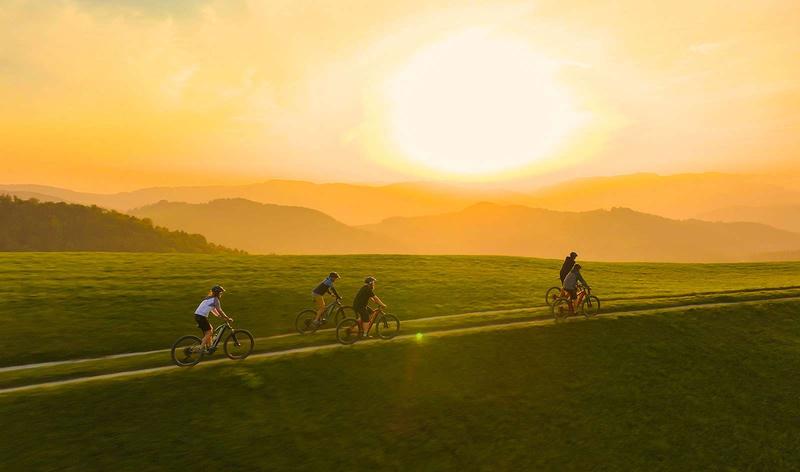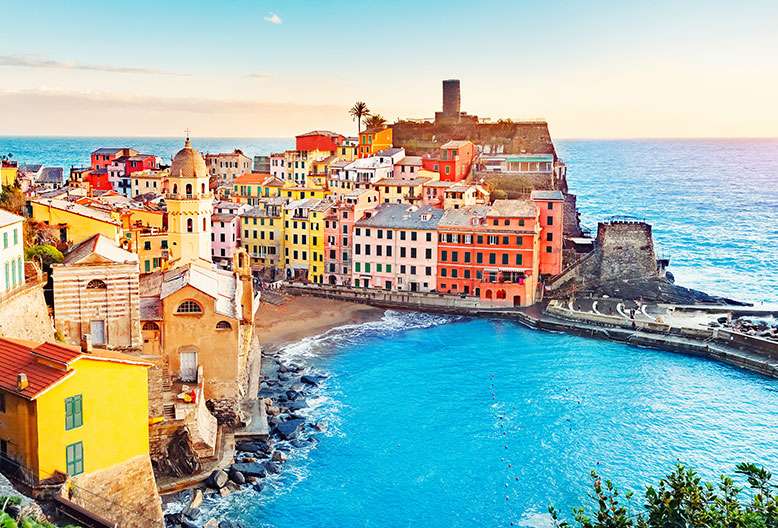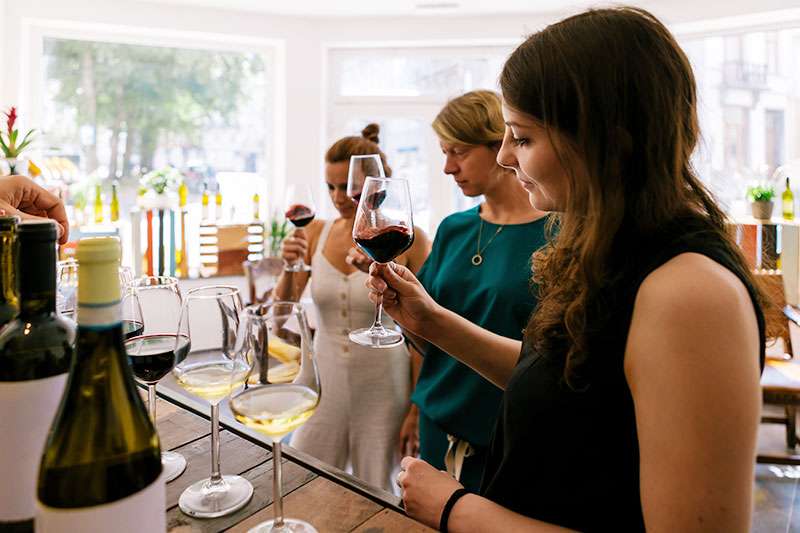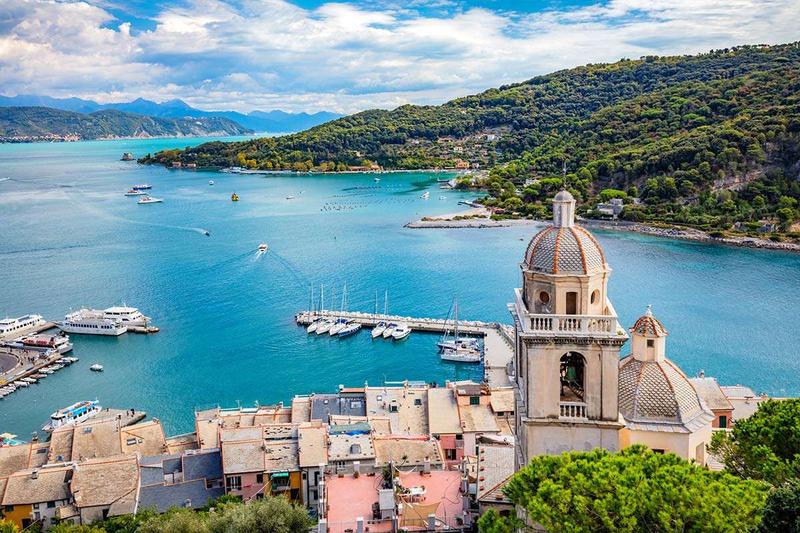Chamber of Saint Paul and Saint Catherine
Removed from Unnamed collection
Source: FiveLands Travel Images may be subject to copyright. Learn More
The Chamber of Saint Paul used to be an integral part of the abbess' quarters in the Benedictine Convent of Saint Paul. This charming space was decorated in 1514, commissioned by the visionary Abbess Giovanna da Piacenza. Her leadership was renowned for fostering a rich cultural atmosphere. Today, the chamber remains a testament to that era's artistic flair and intellectual curiosity.
When you step inside, you're greeted by a mesmerizing blend of history and art. The room's intricate frescoes and ornate details offer a peek into the past, making it a must-see for art lovers and history buffs alike. And while you're there, don't miss the chance to explore the rest of the convent. It's like taking a stroll through history, with every corner revealing a new story. If you're planning a trip to Parma, this is one stop you won't want to miss. The city itself is a delightful mix of old-world charm and modern vibrancy, famous for its culinary delights, including the world-renowned Parma ham and Parmesan cheese. So, make sure to treat your taste buds while soaking in the culture.
You may also be interested:
Removed from Unnamed collection
Pilotta palace 
The sprawling yet incomplete structure, known as Pilotta Palace, owes its name to the game of pelota once played in one of its courtyards. Commissioned in the latter part of the 16th century by Ranuccio I, it was constructed around the Visconti stron
Map
Removed from Unnamed collection
Regio Theatre 
Commissioned by the illustrious Maria Luigia and brought to life by the visionary architect Nicola Bettoli, the Regio Theatre stands as a testament to timeless elegance. Constructed between 1821 and 1829, it occupies the historical grounds of the for
Map
Removed from Unnamed collection
Val dArda is Castell Arquato 
Nestled in the enchanting Val d'Arda, Castell'Arquato is a true gem. Its historical center, with its charming cobblestone streets, is dominated by the majestic Praetorian Palace and the impressive 14th-century Fortress. Wandering through this medieva
Map
Removed from Unnamed collection
Fortress of Castell 
A stunning array of medieval castles graces the valleys and countryside, crafting landscapes that are nothing short of enchanting. Take the Fortress of Castell’Arquato, for example. This historic gem towers majestically above its surroundings, offeri
Map
Removed from Unnamed collection
Church of the Sant Annunziata 
If you're wandering through the enchanting region of Emilia-Romagna, make sure to visit the Church of the Sant’Annunziata. This gem holds the echoes of the ancient State of the Pallavicini and showcases stunning 15th-century architecture. It's not ju
Map
Removed from Unnamed collection
Padernello castle 
This grand residential castle, constructed during the 15th and 16th centuries, stands as a testament to the noble Martinengo family's legacy. Strolling through its historic halls, you can almost feel the echoes of the past whispering stories of grand
Map
Removed from Unnamed collection
Rocca and Ugo da Como house-museum 
Nestled in the heart of Italy, the charming town of Lonato offers an extraordinary monumental complex that's sure to impress even the most discerning travelers. This hidden gem is a must-see for anyone seeking a taste of authentic Italian history and
Map
Removed from Unnamed collection
Local Hills E-Bike Tour with Lunch
16 June 2025
Experience a scenic e-bike ride through the ancient and narrow Tuscan roads. Join us for an immersive adventure in the Florentine hills, made easy by our comfortable e-bikes. Cycle through classic Tuscan landscapes, surrounded by lush greenery, vin
Removed from Unnamed collection
Panoramic Tuscany Hills Walking Tour
18 June 2025
Discover the beautiful surroundings of Florence on a one-day hike through the local green landscapes. Your journey begins with a comfortable minivan ride to a quaint village just outside Florence. Stroll through shady cypress woods, leading you to
Removed from Unnamed collection
Teatro Grande 
The Teatro Grande's magnificent auditorium, crafted by the talented architect Luigi Canonica, stands as a testament to early 19th-century design, having been completed in 1810. The opulent interiors received a stunning makeover in 1862, thanks to the
Map
Removed from Unnamed collection
Cattedrale Matropolitana di San Pietro 
Cattedrale Metropolitana di San Pietro stands proudly in the heart of Bologna, holding the title of "Metropolitana" since 1582, thanks to Pope Gregory XIII. This elevation also marked Bologna's transformation into an archdiocese. Imagine stepping bac
Map
Removed from Unnamed collection
Basilica of San Zeno 
The Basilica of San Zeno in Verona is a stunning example of Romanesque architecture, with a history that dates back to the 4th or 5th century. This magnificent structure was rebuilt after the earthquake of 1117, yet it still retains its ancient charm
Map
Removed from Unnamed collection
Arena Roman Amphitheatre 
Nestled in the heart of Piazza Bra, the majestic amphitheater of Verona stands as a monumental testament to ancient Roman engineering. Constructed in the first half of the 1st century A.D., this architectural marvel dates back to the transition betwe
Map
Removed from Unnamed collection
Orto Botanico 
Tucked away in the lively university district, the Botanical Garden of the University of Bologna is a hidden gem that has been captivating visitors since 1568. Established by the visionary Ulisse Aldrovandi, this garden is one of Italy's oldest and m
Map
Removed from Unnamed collection
The Pinacoteca Art Gallery 
Nestled close to the iconic Due Torri, the Two Towers that stand as proud symbols of Bologna, you'll find the Pinacoteca. This art haven is housed within the former St. Ignatius Jesuit Novitiate, a structure dating back to the latter half of the 15th
Map
Removed from Unnamed collection
Villa Serego - Alighieri 
The most ancient section of the villa harks back to 1353, when Pietro, the son of the famed poet Dante Alighieri, settled in Gargagnago. It's fascinating to think about how this place has been a silent witness to centuries of history, yet it still st
Map
Removed from Unnamed collection
Vernazza Village 
7 August 2022
Деревня Vernazza, в которой находилась наша "база", квартира, из которой мы совершали вылазки в другие места Cinque Terre. В путеводителях было написано, что Vernazza это город, но боюсь, что они сильно приувеличили. Бывшая рыбацкая деревня, которая
Map
Removed from Unnamed collection
Квартира в Vernazza 
8 August 2022
В Vernazza останавливались в квартире на самом верху холма. Из минусов, конечно, что подниматся было непросто. Лишний раз вниз, за бутылочкой кьянти не сбегаешь, вспотеешь. Но с балкона открывались изумительные виды на деревню и на море, а в спальне
Map
Removed from Unnamed collection
One-day Boat Tour 
11 June 2025
Discover the Cinque Terre: A Boat Trip Adventure Begin an enchanting boat tour along the stunning Cinque Terre coastline. As we sail, you'll discover the unique charm of each village basking in the golden glow of the sunset—a view that's simply unp
Map
Removed from Unnamed collection
Coastal Walking Day Trip 
12 June 2025
Explore the breathtaking beauty of Cinque Terre with our expertly guided shore excursions. Accompanied by a knowledgeable tour leader, you'll journey through the iconic villages of Vernazza, Monterosso, Riomaggiore, and Manarola. Stroll the vibra
Map
Removed from Unnamed collection
Monterosso
9 August 2022
Наверное, второй после Vernazza город в Cinque Terre, он чуть побольше чем Vernazza, несколько небольших улиц с кафе, очень понравился, комфортный.
Removed from Unnamed collection
Monterosso beach
9 August 2022
Пляж в деревушке Monterosso, в Италии, в долине Cinque Terre. Приятная, прозрачная вида, немного каменистый вход но терпимо. Жаль, что попали в самый сезон, на пляже не протолкнуться, наверное позже, в Сентябре свободнее.
Removed from Unnamed collection
Small Group Half-Day Trekking Tour
14 June 2025
Cinque Terre is more than just a collection of postcard-perfect villages. It's a tapestry woven with breathtaking nature, charming towns, and rich Italian culture. Our Small Group Half-Day Trekking Tour goes beyond the typical tourist experience, off
Removed from Unnamed collection
Riomaggiore 
9 August 2022
Первая из пяти деревень Cinque Terre, с традиционными домиками, лодками, пиццей. street food у них fried fish mix - креветки, анчоусы, кальмары, вообще все в кучу обжаренное во фритюре. Хорошая смотровая дорожка рядом со станцией
Map
Removed from Unnamed collection
Wine Tasting and Pasta Cooking Class 
8 June 2025
Start a culinary journey through the landscapes of Tuscany and the Cinque Terre. This one-day adventure offers a unique blend of wine tasting and pasta-making experiences, allowing you to immerse yourself in the authentic flavors and traditions of It
Map
Removed from Unnamed collection
Portovenere Private Full-Day Tour - Best of the city and San Pietro 
20 June 2025
Discover the enchanting charm of Portovenere, a hidden gem on the Ligurian coast, during this immersive full-day guided tour. Nestled at the edge of the Cinque Terre, this UNESCO World Heritage-listed village offers a perfect blend of history, dramat
Map
Removed from Unnamed collection
The Teatro Donizetti 
The Teatro Donizetti is a true gem nestled in the heart of Bergamo, Italy. Spanning a grand total of 3,200 square meters, this historic theater holds onto the charm of its original 1786 design. The main hall is a cozy yet impressive 360 square meters
Map
Removed from Unnamed collection
The Parks of Nervi 
The Parks of Nervi are a captivating blend of history and nature, nestled in the heart of Genoa. This remarkable complex is a fusion of several exquisite gardens that once graced private villas: Villa Gropallo, Villa Saluzzo Serra, and Villa Grimaldi
Map
Removed from Unnamed collection
Archaeology Museum 
The Archaeology Museum's origins can be traced back to its first exhibition in the Loggia beneath the Palazzo della Ragione, nestled in the charming Piazza Vecchia. Back then, it was affectionately dubbed a "collection of old stuff" and showcased an
Map
Removed from Unnamed collection
Milan Cathedral 
Picture yourself standing in Milan's bustling heart, gazing up at the magnificent Duomo di Milano. Construction began way back in 1386, right where the ancient basilicas of Santa Tecla and Santa Maria Maggiore once stood. These were ultimately taken
Map
Removed from Unnamed collection
Behold Milan's Awe-Inspiring Gothic Cathedral 
29 November 2023
Even viewed only from the outside, the Duomo di Milano inspires awe with its grand scale and intricately ornate Gothic design. As the third largest church in Europe, this 14th century cathedral dominates the Milan skyline with its forest of soaring s
Map
Removed from Unnamed collection
Milan city 
11 August 2022
Город с замечательной архитектурой, прекрасными улицами, но в котором, если ты не любитель итальянской оперы или не хочешь купить себе мебель, делать нечего уже на второй день
Map
Removed from Unnamed collection
Galleria Vittorio Emanuele II 
The Galleria is both a bustling thoroughfare for business professionals and a captivating destination for curious travelers. It showcases the city's diverse character through its multifaceted charm. When it was first unveiled, the Galleria gained ins
Map
Removed from Unnamed collection
Teatrale Alla Scala 
La Scala, or Teatro alla Scala as it’s known in Italian, stands as a beacon in the world of opera. With its understated yet sophisticated exterior, it often leaves first-time visitors pleasantly surprised. The story of its construction is as dramatic
Map
Removed from Unnamed collection
Brera 
Brera is truly the artistic soul of the city. Wandering through its ancient streets is like stepping into a dreamy painting. Everywhere you look, there's something to capture your imagination: charming artisan workshops, quaint stores brimming with c
Map

 FiveLands Travel
FiveLands Travel 
 Italy
Italy 

































